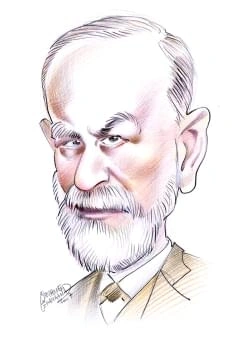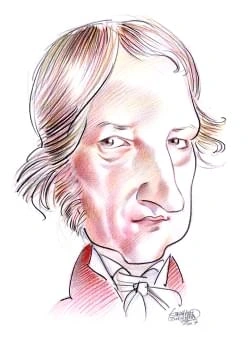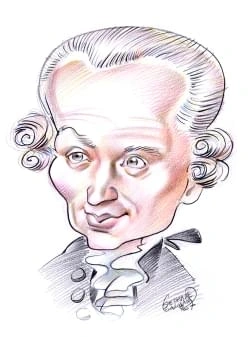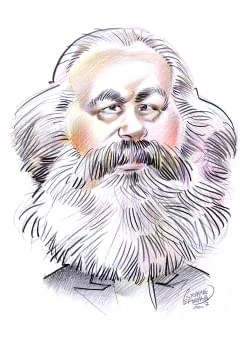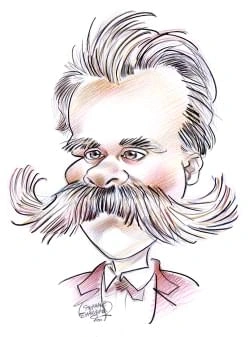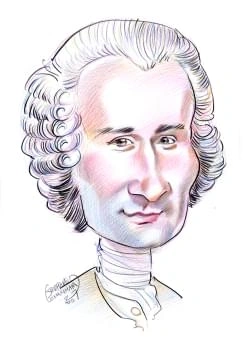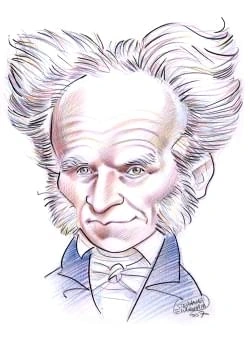175 résultats pour "manufacturing"
-
Jamaica - country.
majority, the Church of God, Baptists, Anglicans, Seventh-day Adventists, Pentecostalists, and Roman Catholics predominate. Several well-established Jewish, Muslim,and Hindu communities exist. A number of popular sects, such as Pocomania and Rastafarianism, are a significant and famous feature of the national religious life. C Education School attendance by children between the ages of 6 and 11 is nearly universal, and 84 percent of all 12- to 18-year-olds attend secondary institutions. In 2000...
-
Botswana - country.
at birth was 50.2 years, also a significant improvement. The urban population of Botswana has increased rapidly, from 18 percent of the total in 1981 to 51 percent in 2003. Gaborone, the capital, is the largest city and mainbusiness center. Other business centers are Francistown, Selebi-Pikwe, Molepolole, Kanye, and Serowe. Botswana received its name from the country’s principal ethnic group, the Tswana. Other ethnic groups include the Kgalagadi, Kalanga, and Basarwa. There are also asmall numbe...
-
Guyana - country.
European patterns of living. People of mixed African and European ancestry form a distinct group in Guyana, maintaining closer social ties to the European communitythan to the African Guyanese community. Asians from the Indian subcontinent began to arrive in the 19th century, following the abolition of slavery in Guyana, to work as indentured and contract laborers. Theycontinued to arrive until 1917, when Britain outlawed indentured servitude. Thousands of Indians chose to remain in Guyana after...
-
Tanzania - country.
The population of Tanzania (2008 estimate) is 40,213,162, giving the country an overall population density of 45 persons per sq km (118 per sq mi). Yet the populationdistribution is irregular, with high densities found near fertile soils around Kilimanjaro and the shores of Lake Malawi, and comparatively low density throughout much ofthe interior of the country. In the late 1960s and 1970s the Tanzanian government resettled most of the rural population in collective farming villages as part of i...
-
Pittsburgh - geography.
College of Allegheny County (1966), with branches in the city and suburbs. Pittsburgh has many outstanding cultural institutions. The Oakland district is where Carnegie Mellon University and the University of Pittsburgh are located. The CarnegieMuseums of Pittsburgh include The Carnegie Museum of Art (including the Scaife Galleries), which holds a distinguished motion-picture and video collection and a uniquestudy of architecture; the Carnegie Museum of Natural History, which displays an extensi...
-
San Antonio (city, Texas) - geography.
The SBC Center is the home venue for the San Antonio Spurs of the National Basketball Association (NBA) and the San Antonio Silver Stars of the Women's NationalBasketball Association (WNBA). The dome also serves as the site for the Alamo Bowl, an annual post-season college football game. Large themed amusement parks inthe San Antonio area are Fiesta Texas and Sea World of Texas. San Antonio’s major annual event is the Fiesta, a ten-day celebration in late April with carnivals, ethnic feasts, art...
-
Business.
The most common form of ownership is a sole proprietorship —that is, a business owned by one individual. At the beginning of the 21st century, there were more than 17 million sole proprietorships in the United States. These businesses have the advantage of being easy to set up and to dissolve because few laws exist to regulatethem. Proprietors, as owners, also maintain direct control of their businesses and own all their profits. On the other hand, owners of proprietorships are personallyrespon...
-
Barbados - country.
Barbados is served by a public library system centered in Bridgetown. B Culture The culture of Barbados combines English institutions, which evolved through more than three centuries of English rule, with a folk culture of African origin. Because ofits English traditions, Barbados is sometimes called “Little England.” Cricket has traditionally been the national game, and the island has produced some of the sport’sgreatest players. Water sports including surfing, swimming, snorkeling, and sailin...
-
-
Ontario - Geography.
governed Ontario’s initial settlement and development. The province’s most important river is the St. Lawrence. Its route was much improved and enlarged by dredgingand canal building in the mid-20th century. This enabled large ocean-going vessels to reach Great Lake ports ( see St. Lawrence Seaway). The Ottawa River was an important early route to the interior for fur traders and timber merchants. The Niagara River, because of its falls, is a great center of hydroelectric power as well as aninte...
-
Ontario - Canadian History.
governed Ontario’s initial settlement and development. The province’s most important river is the St. Lawrence. Its route was much improved and enlarged by dredgingand canal building in the mid-20th century. This enabled large ocean-going vessels to reach Great Lake ports ( see St. Lawrence Seaway). The Ottawa River was an important early route to the interior for fur traders and timber merchants. The Niagara River, because of its falls, is a great center of hydroelectric power as well as aninte...
-
Marketing.
Where advertising reaches a mass audience, personal or direct selling focuses on one customer at a time. That kind of individual attention makes direct sellingexpensive, but it also makes it effective. As the costs of personal selling have risen, the utilization of salespeople has changed. Simple transactions are completed byclerks. Salespeople are now used primarily where the products are complex and require detailed explanation, customized application, or careful negotiation over priceand paym...
-
British Columbia - Geography.
hemlock, Douglas fir, Sitka spruce, and various cedars, grows rapidly in the mild, wet climate and produces the largest trees in Canada. In the dry lowlands of thesouthern and central interior, ponderosa and lodgepole pines, aspen, and bunchgrass are characteristic. Spruce dominates the Prince George region. Prairie grasses andstands of aspen are found in the northeastern corner of the province. At elevations higher than about 1,800 m (about 6,000 ft), an alpine vegetation of shrubs, mosses,and...
-
British Columbia - Canadian History.
hemlock, Douglas fir, Sitka spruce, and various cedars, grows rapidly in the mild, wet climate and produces the largest trees in Canada. In the dry lowlands of thesouthern and central interior, ponderosa and lodgepole pines, aspen, and bunchgrass are characteristic. Spruce dominates the Prince George region. Prairie grasses andstands of aspen are found in the northeastern corner of the province. At elevations higher than about 1,800 m (about 6,000 ft), an alpine vegetation of shrubs, mosses,and...
-
New Hampshire - geography.
Washington. D1 Temperature The coldest parts of the state are in the White Mountains and the extreme north. Average January temperatures range from about -11° C (about 12° F) along theCanadian border to about -3° C (about 26° F) along the coast. July temperatures range from about 17° C (about 63° F) in the mountains to about 21° C (about 70° F)in the south. D2 Precipitation Precipitation is evenly distributed throughout the year over most of the state. However, the higher peaks of the White Mo...
-
New Hampshire - USA History.
Washington. D1 Temperature The coldest parts of the state are in the White Mountains and the extreme north. Average January temperatures range from about -11° C (about 12° F) along theCanadian border to about -3° C (about 26° F) along the coast. July temperatures range from about 17° C (about 63° F) in the mountains to about 21° C (about 70° F)in the south. D2 Precipitation Precipitation is evenly distributed throughout the year over most of the state. However, the higher peaks of the White Mo...
-
Federal Republic of Germany - country.
B Rivers and Lakes Rivers have played a major role in Germany’s economic development. The Rhine River flows in a northwesterly direction from Switzerland through much of westernGermany and The Netherlands into the North Sea. It is a major European waterway and a pillar of commerce and trade. Its primary German tributaries include theMain, Mosel, Neckar, and Ruhr rivers. The Oder (Odra) River, along the border between Poland and Germany, runs northward and empties into the Baltic; it provides an...
-
-
Connecticut - geography.
The state’s shoreline, when all the bays and inlets are taken into account, has a total length of 995 km (618 mi). The coastline is deeply indented by long estuaries androcky inlets, and there are many sandy beaches and stretches of tidal marsh. There are several good harbors along the coast, the most important of which is at NewHaven. A few small islands lie offshore in Long Island Sound. D Climate Connecticut has long, hot summers and cold winters. The climate does not vary greatly from place...
-
Connecticut - USA History.
The state’s shoreline, when all the bays and inlets are taken into account, has a total length of 995 km (618 mi). The coastline is deeply indented by long estuaries androcky inlets, and there are many sandy beaches and stretches of tidal marsh. There are several good harbors along the coast, the most important of which is at NewHaven. A few small islands lie offshore in Long Island Sound. D Climate Connecticut has long, hot summers and cold winters. The climate does not vary greatly from place...
-
Mississippi - geography.
The climate of Mississippi is characterized by long, hot, and humid summers and generally mild winters. The higher lands in the northeast are usually cooler than otherareas of the state. D1 Temperature Average January temperatures range from about 6° C (about 42° F) in northeastern Mississippi to about 12° C (about 54° F) along the Gulf Coast. No part of the stateis entirely free from freezing temperatures, but prolonged periods of extreme cold rarely occur. Temperatures more than 15° C (30° F)...
-
Mississippi - USA History.
The climate of Mississippi is characterized by long, hot, and humid summers and generally mild winters. The higher lands in the northeast are usually cooler than otherareas of the state. D1 Temperature Average January temperatures range from about 6° C (about 42° F) in northeastern Mississippi to about 12° C (about 54° F) along the Gulf Coast. No part of the stateis entirely free from freezing temperatures, but prolonged periods of extreme cold rarely occur. Temperatures more than 15° C (30° F)...
-
South Dakota - geography.
C1 Temperatures Average January temperatures are everywhere less than -4° C (24° F) and decrease to less than -12° C (10° F) in some northern sections. The January temperaturesin Sioux Falls range from -16° to -4° C (3° to 24° F). Nightime lows of -29° C (-20° F) occur during most winters. July averages are in the low and middle 20°s C (lowand middle 70°s F) throughout most of the state, and are somewhat lower in the Black Hills. The average temperature range in Sioux Falls in July is 17° to 30...
-
South Dakota - USA History.
C1 Temperatures Average January temperatures are everywhere less than -4° C (24° F) and decrease to less than -12° C (10° F) in some northern sections. The January temperaturesin Sioux Falls range from -16° to -4° C (3° to 24° F). Nightime lows of -29° C (-20° F) occur during most winters. July averages are in the low and middle 20°s C (lowand middle 70°s F) throughout most of the state, and are somewhat lower in the Black Hills. The average temperature range in Sioux Falls in July is 17° to 30...
-
Uruguay (country) - country.
Freedom of religion is guaranteed by the constitution of Uruguay. Three-quarters of the people belong to the Roman Catholic Church. There are also sizable Protestantand Jewish congregations. The official language is Spanish, which in Uruguay has been influenced by Italian vocabulary and pronunciation. C Education Uruguay has one of the highest rates of literacy in Latin America, at 98.2 percent of the adult population. Six years of primary education is compulsory, and Uruguay isone of the few n...
-
Venezuela - country.
Venezuela has six navigable rivers. Of the thousand or more streams in the country, the majority flow into the Orinoco. The Orinoco flows east across central Venezuelaand drains approximately four-fifths of the total area of the country. With the tributaries—the Apure, Meta, and Negro rivers—it forms the outlet into the Atlantic Oceanfor the waters of much of the interior of Colombia, as well as of inland Venezuela. F Climate The climate of Venezuela is tropical on the Llanos and along the coas...
-
-
South Korea - country.
forest habitat, and overhunting. The Siberian tiger has not been sighted in the wild in South Korea since the 1920s; the Asiatic black bear can still be found in someremote mountain areas. Several species of deer are indigenous to the peninsula, including the roe deer, water deer, and Siberian musk deer. The musk deer, which hasbeen overhunted for its musk glands, is legally protected as a threatened species. Smaller mammals indigenous to the peninsula include the wild boar, red fox, badger,rabb...
-
Italy - country.
C Natural Resources Italy is poor in natural resources. Much of the land is unsuitable for agriculture because of mountainous terrain or unfavorable climate. Italy, moreover, lacks substantialdeposits of basic natural resources such as coal, iron, and petroleum. Natural gas is the country’s most important mineral resource. Other deposits include feldspar andpumice. Many of Italy’s mineral deposits on the islands of Sicily and Sardinia had been heavily depleted by the early 1990s. Italy is rich...
-
Central America - Geography.
F Animal Life Most of the animal life of Central America is similar to that of South America, but some animals have ties with North America. The marley and opossum have links withSouth America, as do the jaguar, ocelot, jaguarundi, and margay, which are members of the cat family. In contrast, the puma, gray fox, and coyote are of NorthAmerican origin. The armadillo, anteater, and sloth have ties to the south, deer to the north. The large manatee, an aquatic plant eater, survives in the isolated...
-
Immigration.
1655, only to lose all of their North American colonies to the British in 1664. These early colonies were often quite cosmopolitan, drawing settlers from many nations.When the English seized New Amsterdam, the city was home to perhaps 1500 residents, including Walloons, Huguenots, Swedes, Dutchmen, and African Americans. C The French and Spanish The French and Spanish also established colonies in North America. The Spanish established the oldest permanent European settlement in Saint Augustine,...
-
Immigration - U.
1655, only to lose all of their North American colonies to the British in 1664. These early colonies were often quite cosmopolitan, drawing settlers from many nations.When the English seized New Amsterdam, the city was home to perhaps 1500 residents, including Walloons, Huguenots, Swedes, Dutchmen, and African Americans. C The French and Spanish The French and Spanish also established colonies in North America. The Spanish established the oldest permanent European settlement in Saint Augustine,...
-
Newfoundland and Labrador - Geography.
Precipitation averages about 1,120 mm (about 44 in) yearly in Newfoundland. In Labrador precipitation varies from about 1,020 mm (about 40 in) in the southeast toabout 510 mm (about 20 in) in the extreme north. Heavy winter snowfalls are common, especially in Newfoundland. D Plant Life About one-third of Newfoundland is forested, and most of the rest of the island is made up of barren areas of reindeer moss and lichens. The forests consist almostentirely of conifers. The most important species...
-
Newfoundland and Labrador - Canadian History.
Precipitation averages about 1,120 mm (about 44 in) yearly in Newfoundland. In Labrador precipitation varies from about 1,020 mm (about 40 in) in the southeast toabout 510 mm (about 20 in) in the extreme north. Heavy winter snowfalls are common, especially in Newfoundland. D Plant Life About one-third of Newfoundland is forested, and most of the rest of the island is made up of barren areas of reindeer moss and lichens. The forests consist almostentirely of conifers. The most important species...
-
Detroit - geography.
Automobile industrialist Henry Ford was born near Dearborn, Michigan, in 1863. Ford built his first automobile in 1893 and establishedhis own manufacturing company ten years later. The Ford Company headquarters are in Dearborn, as is the Henry Ford Museum,shown here, which tells of the transition of the United States from an agricultural to an industrial society, a change in which Fordplayed a central part.Townsend P. Dickinson/Photo Researchers, Inc. The Detroit city center also houses one of t...
-
-
Tunisia - country.
mixture of Berber and Arab stock, and they regard themselves as Arabs. Nearly everyone speaks Arabic. The population of Tunisia is concentrated in the coastal plain. It is fairly dense in the hilly north, but the arid plateau, basin, and south are thinly settled. About two-thirds of the country’s people live in urban areas. A Principal Cities The capital and largest city of Tunisia is the seaport of Tunis. Other important cities include Sfax, a port and center of trade on the eastern coast; Sūs...
-
Great Depression in the United States - U.
prices would continue to rise and they could soon sell their stocks at a profit. The widespread belief that anyone could get rich led many less affluent Americans into the market as well. Investors bought millions of shares of stock “on margin,” arisky practice similar to buying products on credit. They paid only a small part of the price and borrowed the rest, gambling that they could sell the stock at a highenough price to repay the loan and make a profit. For a time this was true: In 1928 the...
-
Saskatchewan (province) - Geography.
The length of the frost-free season varies within the province. In the southwest, particularly in the valley lands along the South Saskatchewan River, the frost-freeperiod ranges from 150 to 160 days. Regina enjoys about 123 frost-free days, and Saskatoon has about 111. The far north has only from 85 to 95 frost-free days. One important characteristic of Saskatchewan’s climate is the great variability in temperature and precipitation from year to year, which is often critical for agriculture.The...
-
Saskatchewan (province) - Canadian History.
The length of the frost-free season varies within the province. In the southwest, particularly in the valley lands along the South Saskatchewan River, the frost-freeperiod ranges from 150 to 160 days. Regina enjoys about 123 frost-free days, and Saskatoon has about 111. The far north has only from 85 to 95 frost-free days. One important characteristic of Saskatchewan’s climate is the great variability in temperature and precipitation from year to year, which is often critical for agriculture.The...
-
Poverty.
economic and demographic trends, and (7) welfare incentives. A Overpopulation Overpopulation, the situation of having large numbers of people with too few resources and too little space, is closely associated with poverty. It can result from highpopulation density (the ratio of people to land area, usually expressed as numbers of persons per square kilometer or square mile) or from low amounts of resources, or from both. Excessively high population densities put stress on available resources....
-
Hungary - country.
Northern Hungary lacks sufficient water, especially between July and October, when precipitation levels are typically low. Canals irrigate the Great Hungarian Plain,which is subject to drought. Because of the country’s mainly flat terrain, only limited water resources can be harnessed for hydroelectric power. F Environmental Issues Rapid industrialization in Hungary following World War II contributed significantly to a number of major environmental problems, including air, water, and soil pollu...
-
Colombia - country.
In Bogotá the average high temperature in January is 20°C (68°F), and in July the average high is 19°C (65°F). The highs for the same months in Barranquilla are 32°C(89°F) and 33°C (91°F). Throughout the year, three-month periods of rain and dry weather alternate. Along the Pacific coast precipitation is heavy. At Bogotá the annual rainfall averages about1,060 mm (about 42 in), and in Barranquilla it averages about 800 mm (about 32 in). Dry weather prevails on the slopes of the Cordillera Orient...
-
Kolkata - geography.
Other places of interest in Kolkata are the fashionable Jawaharlal Nehru (formerly Chowringhee) Road, the city’s main thoroughfare; the Raj Bhavan (1802; formerly calledthe Government House), the state governor’s residence; the Indian Museum (1875), which contains noted displays on archaeology and natural history; and the BirlaIndustrial and Technological Museum. The Botanical Gardens (1786) in Hāora (or Howrah), Kolkata’s twin city, features many tropical plants in addition to a famous banyantr...
-
-
Victoria (city, British Columbia) - Geography.
routes, and good agricultural land. These advantages were publicized by Sir James Douglas, the chief factor (administrative head) of the company’s Pacific Coastoperations, who founded the fort. They were in turn recognized by the British Colonial Office, which made Victoria the capital of the colony of Vancouver’s Island (the oldname for Vancouver Island) in 1849. The community’s growing commercial importance during the Fraser River and Cariboo gold rushes of the 1850s led to itsincorporation in...
-
Central Processing Unit.
Development of the computer chip started in 1958 when Jack Kilby of Texas Instruments demonstrated that it was possible to integrate the various components of aCPU onto a single piece of silicon. These computer chips were called integrated circuits (ICs) because they combined multiple electronic circuits on the same chip.Subsequent design and manufacturing advances allowed transistor densities on integrated circuits to increase tremendously. The first ICs had only tens of transistorsper chip com...
-
Nashville - geography.
May event has grown into a major festival. In September the city hosts the Tennessee State Fair. One of Nashville's principle attractions is Opryland, a complex of entertainment and broadcasting facilities that offers live music shows, a resort and convention center,and shopping outlets. Since 1974 it has been the home to the Grand Ole Opry radio show, a country-music production that has not missed a broadcast since 1925. Percy Park and Edwin Warner Park provide open space, trails, playing field...
-
Québec (city) - Geography.
rotates between the mayors of small, medium, and core municipalities. The QUC is responsible for zoning, regional development, property valuation, waste disposal, andtourism promotion. City planning and public transit are handled in collaboration with the municipalities. Other municipal functions such as public works, libraries, water,parks, fire and police services, street repair, and traffic control are left to the municipalities. VII CONTEMPORARY ISSUES In recent years the St. Lawrence Rive...
-
Dallas (Texas) - geography.
VI RECREATION Dallas contains more than 400 parks that cover a total of about 20,000 hectares (about 50,000 acres). Notable parks include Marsalis Park, which contains the DallasZoo, and the parks surrounding White Rock Lake, Bachman Lake, and Lake Cliff. City-owned greenbelts parallel White Rock Creek, Turtle Creek, and the Trinity River.Fair Park contains a number of museums, the city aquarium, and the Cotton Bowl stadium (the site of the annual Cotton Bowl college football game), as well as...
-
Liberia - country.
West Atlantic, or Kwa linguistic groups. D Education Education is free and compulsory for children between the ages of 6 and 15. However, a scarcity of educational facilities means that few Liberians progress beyondprimary school. Almost all children of primary school-age attend school, but the figure drops to 23 percent (1999–2000) for secondary school-age children. Just 60percent of the population was literate in 2005. Higher education is provided by the University of Liberia (1862), in Monro...
-
Belize - country.
Education is compulsory for children between the ages of 5 and 14. Attendance at primary schools was nearly universal in 2002–2003, but only 78 percent of children ofsecondary school age were enrolled in school. Higher education is available at colleges in Belize City and Corozal. The literacy rate of 93 percent is one of the highest inLatin America. C Government Belize is governed under a constitution that became effective at independence in 1981. Belize recognizes the British monarch as its o...
-
Gabon - country.
government is engaged in preservation and reforestation programs. The fish catch in 2005 was 43,941 metric tons. C Mining Mining has developed rapidly since Gabon’s independence in 1960. Annual production of extremely high-grade manganese ore, from Moanda in the southeast, was1,090,000 metric tons in 2004. The rich deposits of iron ore located at Mekambo and Bélinga in the northeast have reserves estimated at more than 500 million metrictons. Exploitation of the iron ore has been hampered by th...
-
-
Burkina Faso - country.
powers to promote the welfare of the people. The Lobi live in the southwest as farmers and hunters. Defiant of newcomers, they live in small terraced fortifications. The Bobo are chiefly farmers, artisans, and metalworkers living in large villages in the west-central part of the country. The Gourounsi are mainly artisans and farmers in the south-central areas. Their society is lesshighly structured than that of the other Voltaic groups. Christianity has made substantial inroads among them. The M...
-
The Gambia - country.
The population of The Gambia (2008 estimate) is 1,735,464, making it one of the least populous countries of Africa. Still, the country has a fairly high overall populationdensity of 174 persons per sq km (449 per sq mi), and the population is increasing at a rate of 2.7 percent a year. Banjul, formerly called Bathurst, is the capital andonly seaport. The largest city is Serrekunda, a transportation hub and commercial center. B Religion and Language The great majority of the people of The Gambia...
}})
